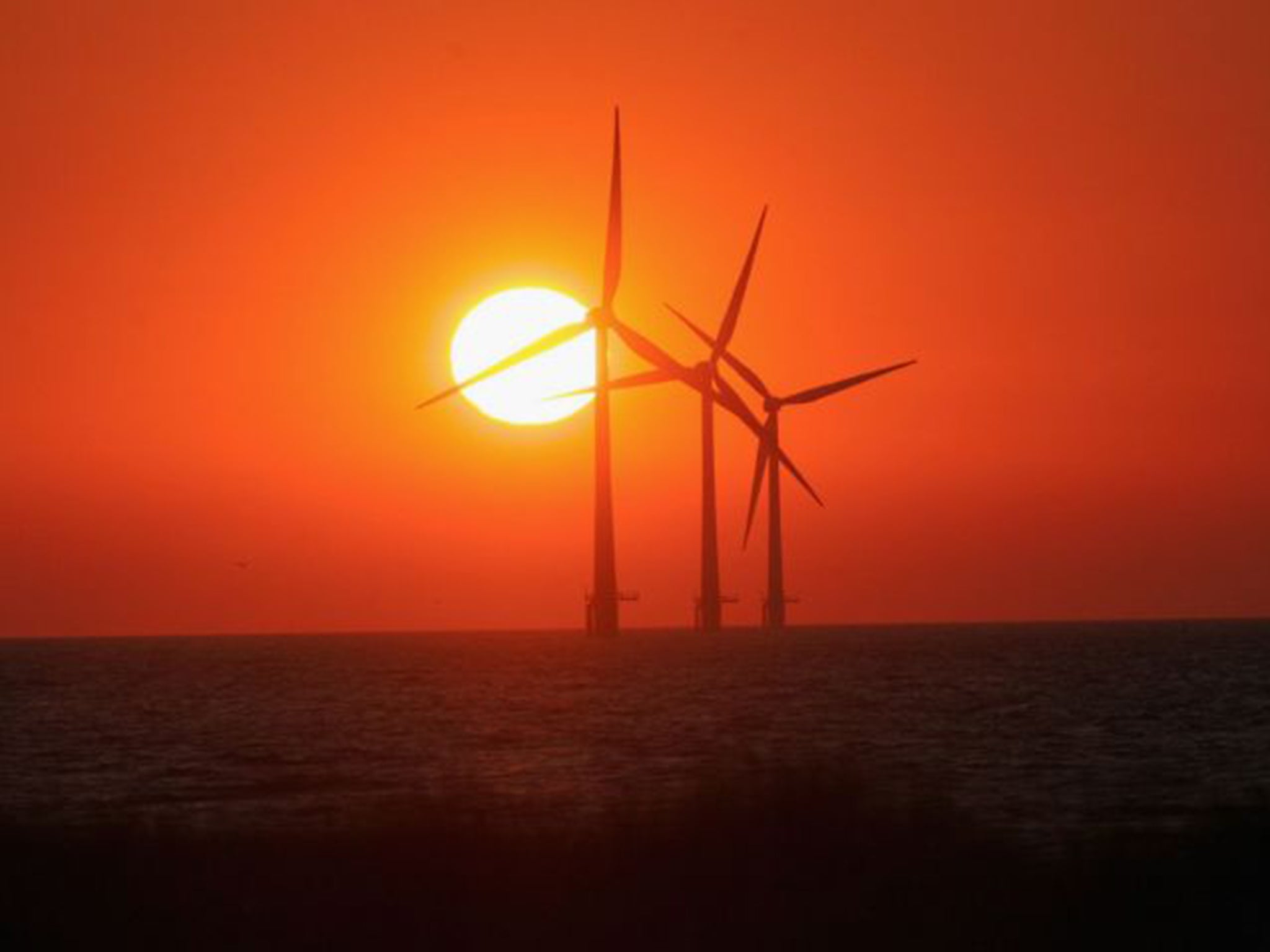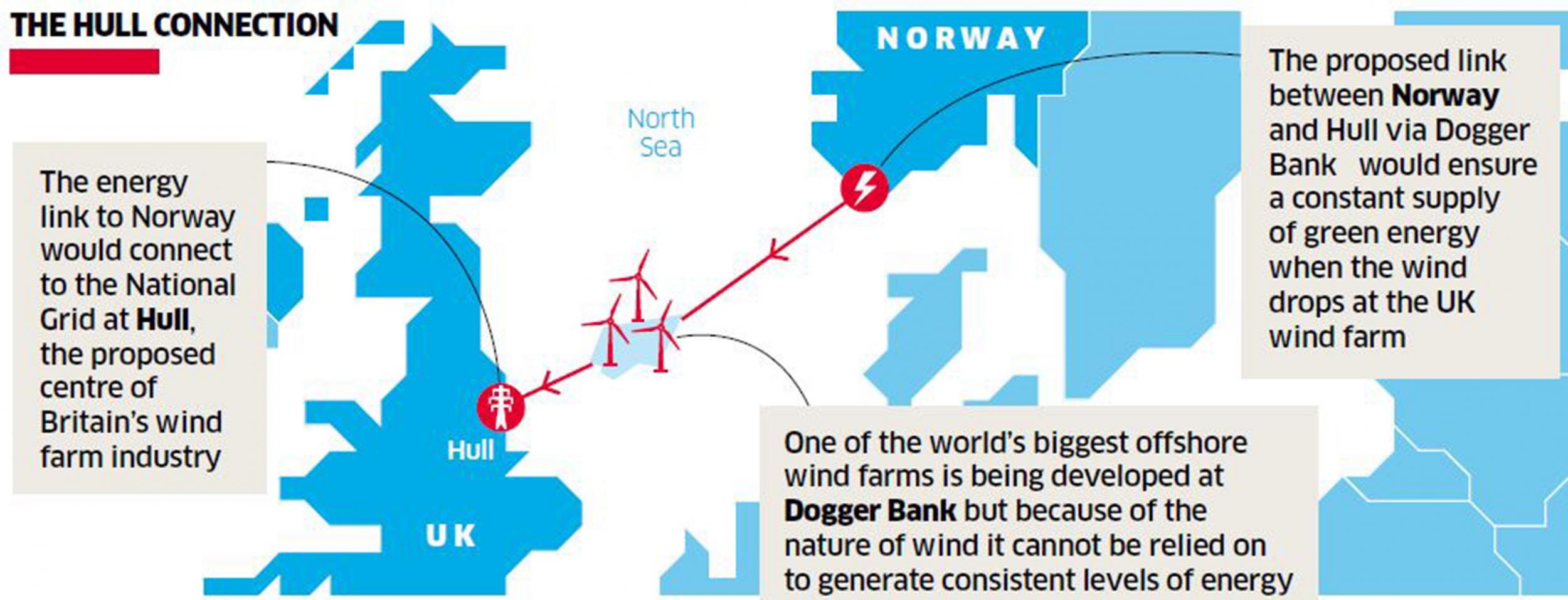Ministers consider linking UK's National Grid to Norway in bid to harness country's green energy
Plan would join Scandinavian hydro to Dogger Bank wind farm for round-the-clock green power

Your support helps us to tell the story
From reproductive rights to climate change to Big Tech, The Independent is on the ground when the story is developing. Whether it's investigating the financials of Elon Musk's pro-Trump PAC or producing our latest documentary, 'The A Word', which shines a light on the American women fighting for reproductive rights, we know how important it is to parse out the facts from the messaging.
At such a critical moment in US history, we need reporters on the ground. Your donation allows us to keep sending journalists to speak to both sides of the story.
The Independent is trusted by Americans across the entire political spectrum. And unlike many other quality news outlets, we choose not to lock Americans out of our reporting and analysis with paywalls. We believe quality journalism should be available to everyone, paid for by those who can afford it.
Your support makes all the difference.An ambitious project to link the UK’s National Grid to Norway via a cable under the North Sea, in a bid to access that country’s vast supply of green energy, is being considered by ministers.
It would involve laying a multibillion-pound “interconnector” between the energy-rich Scandinavian country and Britain – passing through a vast offshore wind farm being developed at Dogger Bank, the shallow area about 100 miles off the Yorkshire coast.
The scheme has the potential to generate more than three times the energy produced by the new £24bn nuclear power station at Hinkley Point in Somerset.
It is being considered alongside a proposal to link the UK to Iceland to access that country’s volcanic geothermal energy and is part of a wider move to diversify Britain’s power sources.
The Dogger Bank project, creating one of the world’s biggest offshore wind farms, is already under way but because of the intermittent nature of wind it cannot be relied on to generate consistent supplies of electricity.

However, if the wind farm was connected to a giant hydro-electric plant on the Norwegian coast, any drop in supply could be automatically topped up, providing the National Grid with guaranteed green energy all year round.
The scheme, which was first raised at a ministerial-level meeting between the UK and Norway, would take years to deliver and cost billions of pounds. However, ministers at the Department for Energy and Climate Change believe it is the most exciting energy project on the table and is more realistic than the “prohibitively expensive” plans to build tidal barrages at Swansea Bay and in the Severn Estuary.
The proposed link would need to be approved by both the Norwegian and UK governments and would take years to build.
Speaking to The Independent on Sunday one minister said: “It is a fantastic scheme which has the potential to provide far more energy than even Hinkley Point. I’m urging the Government to seriously consider it.”
The minister said the project squared the circle of how to guarantee energy from a wind farm when the wind stops blowing.
It would also help to re-industrialise deprived parts of North-East of England, including Hull which ministers believe has the potential to become the centre of a booming offshore wind-farm industry.
A spokesman at the Department for Energy and Climate Change confirmed that the Government was considering schemes to connect the National Grid to other countries’ energy supplies. He said: “A number of new projects that will nearly triple our interconnection capacity are already in the pipeline and we are looking at the viability of other interesting proposals.”
The department believes interconnection has the potential to lower bills, improve the security of supply – and reduce the need to import gas from Russia and the Middle East.
A source said: “Norway is a close ally both in terms of supplying us energy but also diplomatically and militarily as a member of Nato. They are a country we could rely upon when developing a scheme like this.”
Ministers are also attracted to the project because it would help support the goals set out in the Paris climate change treaty to move to more low-carbon generation.
The UK is already connected to a number of other countries’ energy supplies – including Belgium, France and Ireland.
A task force looking into the feasibility of an interconnector with Iceland and is expected to make its recommendations in May.
Join our commenting forum
Join thought-provoking conversations, follow other Independent readers and see their replies
Comments